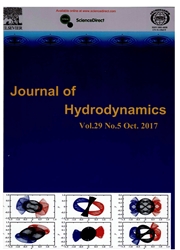

 中文摘要:
中文摘要:
地下水和溶质运输的一个简化数字模型被开发。逍遥法外在那里的规模区域存在水平、垂直的长度之间的大空间规模差别可伸缩。在结果的模型,渗出物区域特别地根据阶层性质沿着 z 方向和垂直 1-D 列盖住 x-y 2-D 区域被划分成几虚拟层。数字算法在 x 方向和 y 方向和 1-D 作为 2-D Galerkin 有限元素方法正在更换完整的 3-D 水和集体平衡分析在 z 方向的有限微分途径。给最小的厚度的合理方法成功地被用来处理水桌子的短暂变化,弄干重新弄湿的房间和问题。简化模型的答案是 preconditioned 结合坡度和 ORTHOMIN 方法。发达 3-D 地下水模型的有效性与典型的抽和回水情形被测试。计算例子的水平衡的结果揭示模型计算可靠性。基于一个代表性的 3-D 污染盒子,溶质运输模块对用 MT3DMS 计算结果被测试。能力和高度处于地区性的规模问题预言免费地下水表面和溶质羽毛的非静止的状况的效率是调查的份量上。建议模型是计算地有效的,这被显示出。
 英文摘要:
英文摘要:
A simplified numerical model of groundwater and solute transport is developed. At large scale area there exists a big spatial scale difference between horizontal and vertical length scales. In the resultant model, the seepage region is particularly divided into several virtual layers along the z direction and vertical 1-D columns covering x-y 2-D area according to stratum properties. The numerical algorithm is replacing the full 3-D water and mass balance analysis as the 2-D Galerkin finite element method in x- and y-directions and 1-D finite differential approach in the z direction. The reasonable method of giving minimum thickness is successfully used to handle transient change of water table, drying cells and problem of rewetting. The solution of the simplified model is preconditioned conjugate gradient and ORTHOMIN method. The validity of the developed 3-D groundwater model is tested with the typical pumping and backwater scenarios. Results of water balance of the computed example reveal the model computation reliability. Based on a representative 3-D pollution case, the solute transport module is tested against computing results using the MT3DMS. The capability and high efficiency to predict non-stationary situations of free groundwater surface and solute plume in regional scale problem is quantitatively investigated. It is shown that the proposed model is computationally effective.
 同期刊论文项目
同期刊论文项目
 同项目期刊论文
同项目期刊论文
 期刊信息
期刊信息
